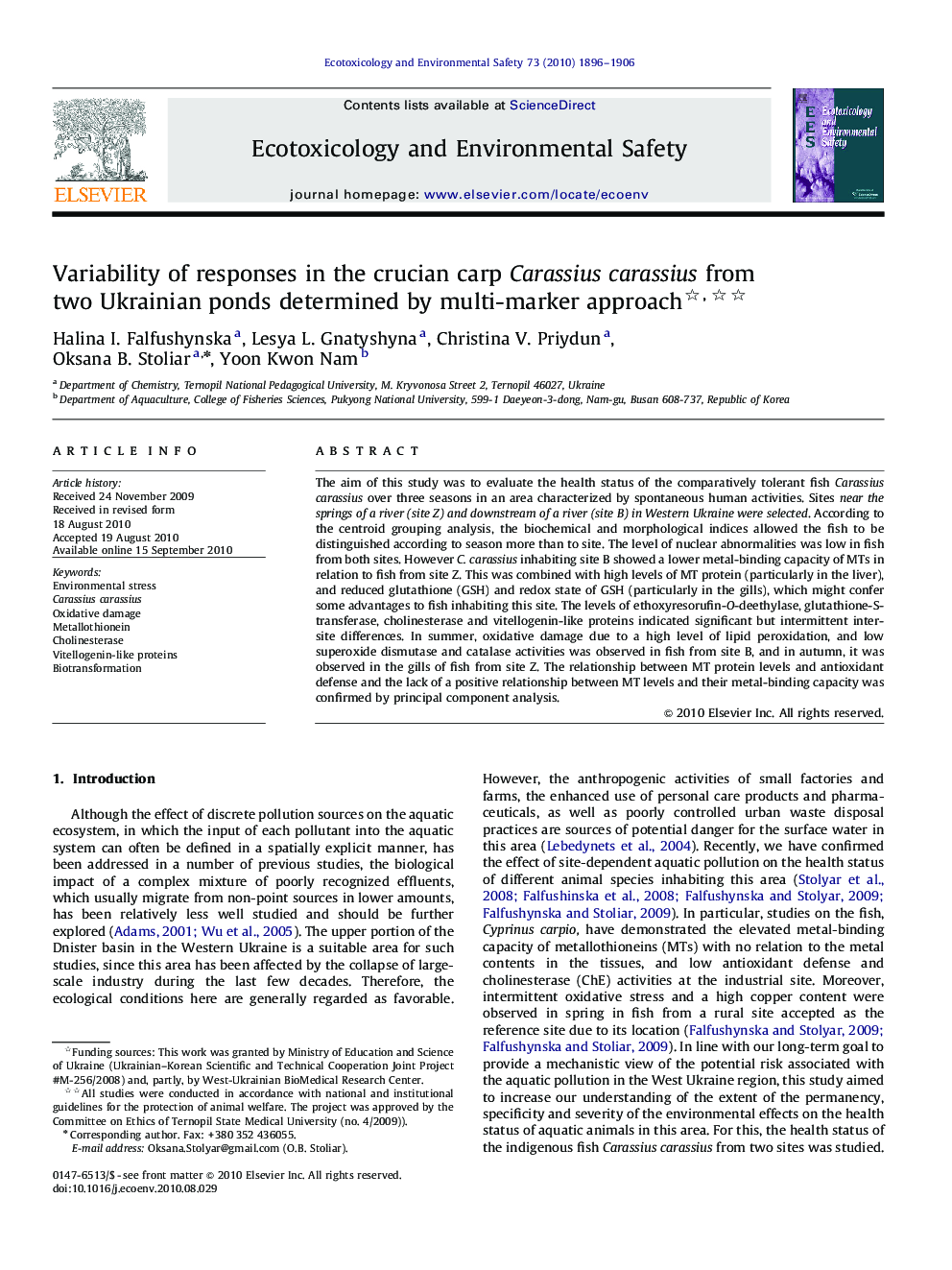| Article ID | Journal | Published Year | Pages | File Type |
|---|---|---|---|---|
| 4421569 | Ecotoxicology and Environmental Safety | 2010 | 11 Pages |
The aim of this study was to evaluate the health status of the comparatively tolerant fish Carassius carassius over three seasons in an area characterized by spontaneous human activities. Sites near the springs of a river (site Z) and downstream of a river (site B) in Western Ukraine were selected. According to the centroid grouping analysis, the biochemical and morphological indices allowed the fish to be distinguished according to season more than to site. The level of nuclear abnormalities was low in fish from both sites. However C. carassius inhabiting site B showed a lower metal-binding capacity of MTs in relation to fish from site Z. This was combined with high levels of MT protein (particularly in the liver), and reduced glutathione (GSH) and redox state of GSH (particularly in the gills), which might confer some advantages to fish inhabiting this site. The levels of ethoxyresorufin-O-deethylase, glutathione-S-transferase, cholinesterase and vitellogenin-like proteins indicated significant but intermittent inter-site differences. In summer, oxidative damage due to a high level of lipid peroxidation, and low superoxide dismutase and catalase activities was observed in fish from site B, and in autumn, it was observed in the gills of fish from site Z. The relationship between MT protein levels and antioxidant defense and the lack of a positive relationship between MT levels and their metal-binding capacity was confirmed by principal component analysis.
